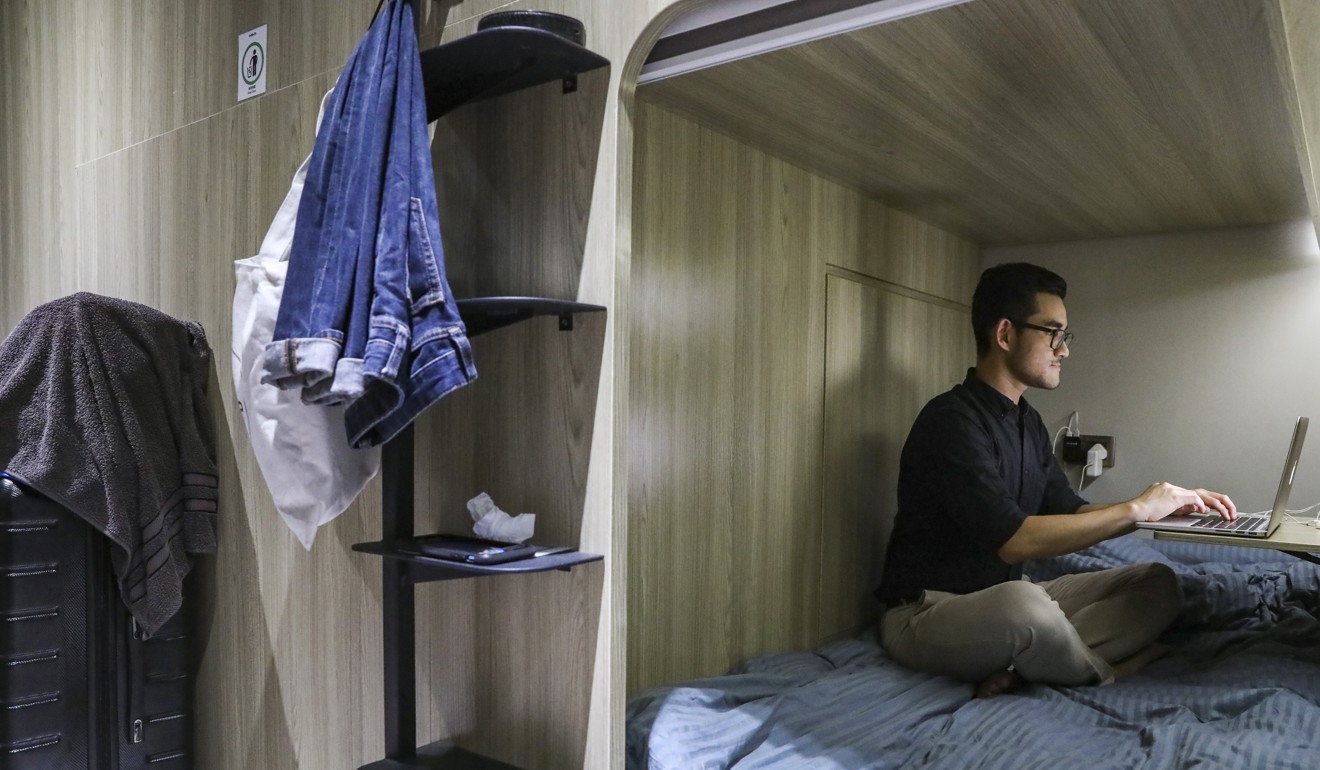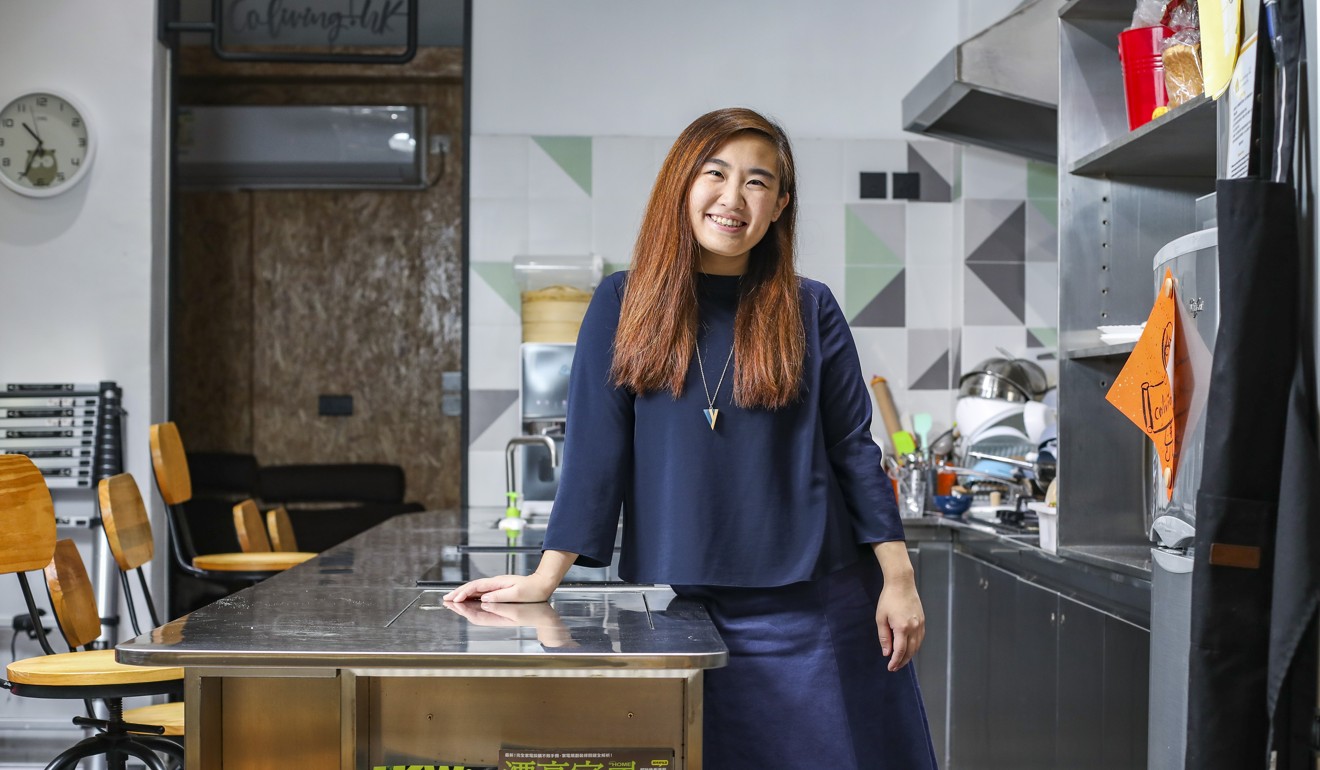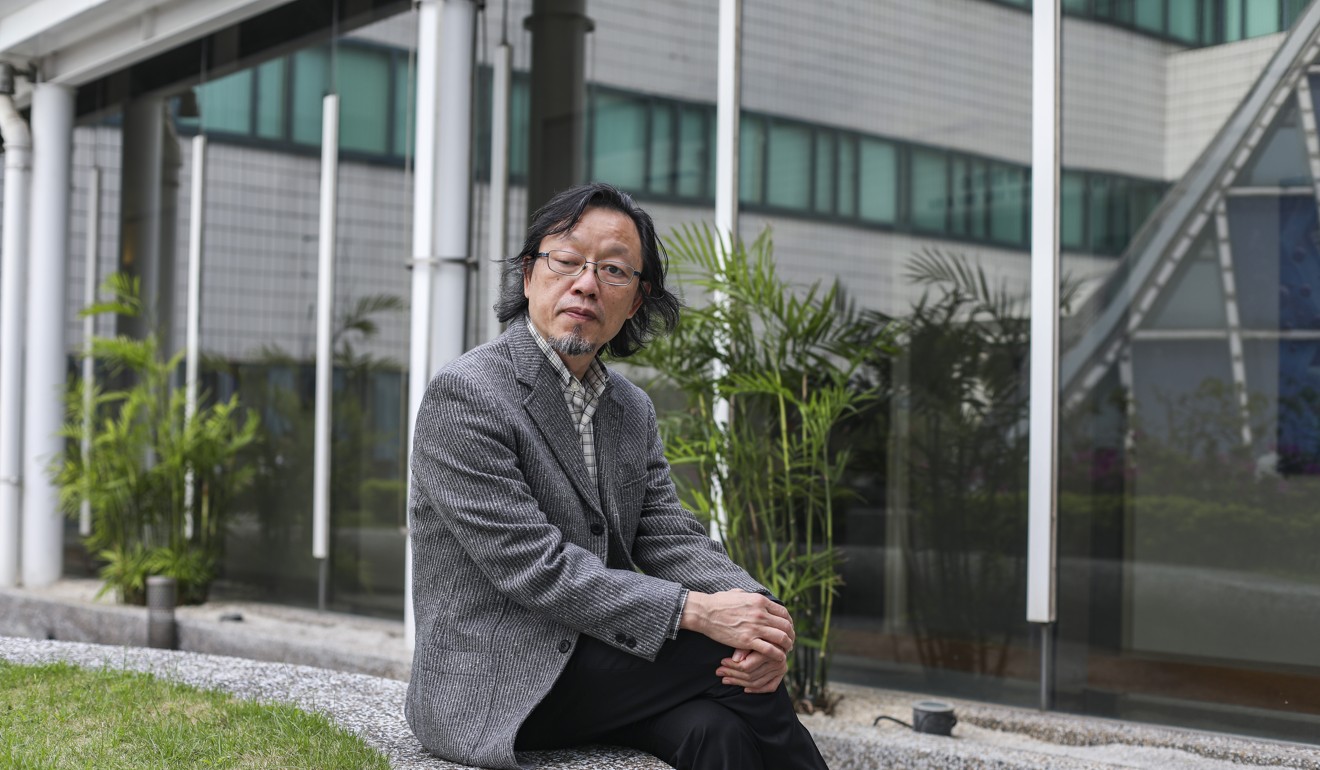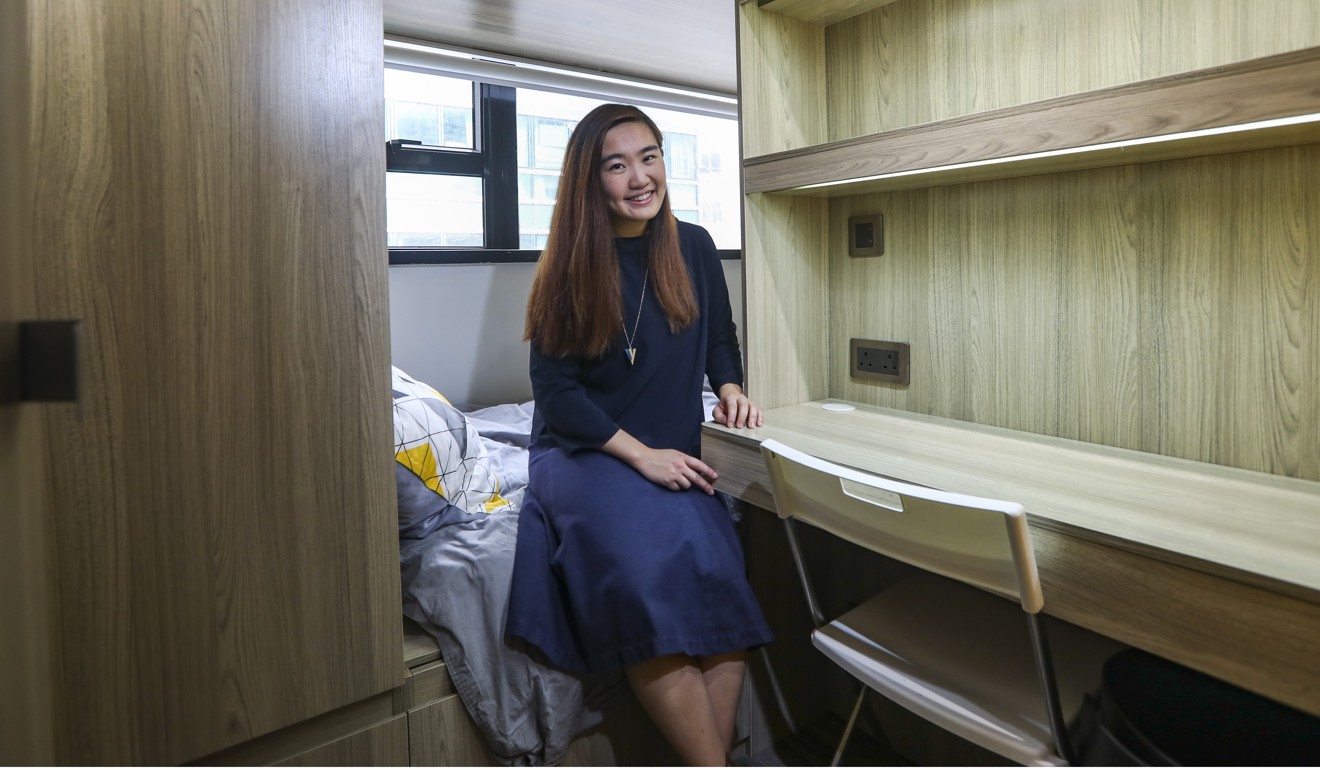
Why more young people are opting for co-living spaces in Hong Kong – and it’s not just for cheap housing
- Increasing numbers of youngsters keen to escape home and enjoy a taste of freedom are opting for shared housing
- Schemes have also drawn millennials and young professionals in the city, where 76 per cent of adults aged 18 to 35 still live with their parents
Three weeks into his new job as a graduate trainee, Adriel Tjokrosaputro overslept. At 10am, he made a frantic call to his supervisor at a commercial real estate company to explain the situation.
“I told him I don’t get any sunlight in my cabin, which was why I didn’t know it was already daytime,” the 25-year-old recalls.
For less than HK$3,500 (US$450) a month, the Indonesian rents a windowless bed space in Mong Kok. Measuring about two metres in length, one metre across and one metre in height, the space resembles a cabin in a Japanese-style capsule hotel.
His cabin is one of dozens in a co-living space – a form of shared housing that emphasises community, and often includes group events such as monthly welcome parties for new residents, film screenings, rooftop yoga classes, festive meals and even shopping trips for those new to Hong Kong.

“At least I’m able to sit up straight in my cabin without hitting my head on the roof,” says Tjokrosaputro, who occupies the bottom cabin. Surrounding his bed space are five other cabins arranged across two rows.
His unit comprises two toilets, two showers, a kitchenette and laundry area, six cabins, three single rooms and one double room and can accommodate up to 11 males in a tight space. He shares his unit with six other non-locals, who make up about half the residents of co-living spaces.
Hong Kong tops table as world’s most expensive housing market for 9th straight year
Across Hong Kong, some 1,000 to 1,500 other people occupy similar bed spaces in 15 co-living schemes run by companies and property developers.
The living arrangements vary. Some units are packed with capsules like Tjokrosaputro’s. Others have hostel-style double-bunk beds. Some co-living spaces include pricier single and double rooms furnished with wardrobes and desks.
These schemes have also drawn Hong Kong millennials and young professionals working in the city, where 76 per cent of adults aged 18 to 35 still live with their parents, largely due to unattainable home prices.
According to investment management company JLL, the number of co-living schemes in Hong Kong has increased by almost three times in just two years.
Not only are these spaces relatively affordable, they also serve as somewhat of a starter pack for young people who wish to live independently and practise “adulting”, and residents need never feel alone.
Despite restrictions on visiting hours, activities and the space available, they are getting so popular that a property expert says they have potential to be big business, and recently named co-living one of the top three alternative investment options in Hong Kong, alongside data centres and car parks.
Living in this small space is not the best feeling in the world, but there’s so much more to moving to a new place than your accommodation
Denis Ma On-ping, head of research at JLL, says this is because co-living spaces are often positioned as a lifestyle choice, rather than simply cheap housing. “This means operators and investors will have greater flexibility to increase rents,” he says.
Rents – or “management fees”, as some operators prefer to call it – can range from around HK$3,500 for a bed space to HK$28,000 for a furnished room with more privacy.
“Young professionals who value community may find the higher price points worth it,” Ma says.
Co-living spaces often hire “community managers” to organise events, foster a sense of belonging and arrange repair works.
Tjokrosaputro arrived last July with little more than a few shirts, a jacket and workout clothing in his suitcase, and with good reason: his Mong Kok bed space comes with just one cabinet.
“I love the nomadic lifestyle of having so few belongings,” he says. “It was just me and my suitcase in a new space, living a new experience.”
He chose bustling Mong Kok for its “strong local flavour”, and shares his unit with six men from Singapore, the Netherlands, India, Britain and Mexico.
“Living in this small space is not the best feeling in the world, but there’s so much more to moving to a new place than your accommodation. It’s about experiencing the lifestyle, and the people,” he says.
Co-living appealed to Tjokrosaputro because of its all-inclusive low rent and he was able to move in without first opening a local bank account.

Hongkonger Michelle Chau Wang-yu decided to move into a co-living space fuelled by a desire for independence, without the fuss. In December 2017, she traded her fluffy bed in her family’s 1,000 sq ft flat for a thin mattress in a cabin similar to Tjokrosaputro’s.
“It’s contradictory, I know,” admits Chau, 25, a technology entrepreneur. “I wanted to live away from home, but wasn’t ready to take on expensive rent and utilities.”
Like Chau, Hongkonger Don Chu wanted to move out of his family home, but did not want to spend more than he could afford. The 22-year-old surveyor moved into a co-living space in Prince Edward around four months ago, sharing a sprawling living area with other young professionals.
Why public housing shortfall will remain a thorn in Hong Kong’s side
Chu stays in a room furnished with a bed with built-in storage, a wardrobe, a desk, a bathroom, and a fridge. Rent is HK$10,000 a month – 70 per cent of which is paid by his sister and her boyfriend.
“I had to move out because my family moved to a smaller flat, and there wasn’t enough space,” he explains.
Hongkonger Pong, a 30-year-old environmental entrepreneur who preferred not to give his real name, moved into a Mong Kok co-living space which he shares with eight others and says it gives him more privacy than he had at home. He used to live with four other family members in a small flat in Western district, with no room of his own and he had frequent bouts of asthma.
City University Professor Yip Ngai-ming, who has studied how young people live in Hong Kong, says that in the long run, multigenerational families sharing small spaces often experience more downs than ups.

“If you’ve reached a certain age and are still living at home, you might have a harder time learning to be independent because your family will take care of you,” he says. “But when you reach your 40s or 50s, it’s likely your elderly parents will expect you to take care of them in return. If these dynamics aren’t treated properly, this can result in tension.”
Yip believes co-living spaces are a good option for young people seeking a taste of independence and craving intellectual exchange with peers.
Perhaps the happiest homeless person in Hong Kong: ex-teacher Simon Lee
Michelle Chau spent six months in a co-living space before moving back to her family home on Hong Kong Island.
“My parents wanted me back because they worried for my health – I was always hanging out with other residents until 4am,” she explains.
Chau says the interaction with other residents of her co-living space was a plus.
“When you’re working full time, it’s almost impossible to spontaneously meet up with friends for dinner. Everyone is busy. But here, you’ll never eat alone,” she says.
While at the co-living space, Chau was often greeted with hearty home-cooked meals when she returned from work. Ironically, this seldom happens at home as conflicting schedules make it difficult for family members to have meals together.
Pong rented a room at a co-living space for HK$5,000 a month before downgrading to a space like Tjokrosaputro’s in a unit he shares with eight others.
He has begun spending more time at his family home, which has been renovated, but stays two to three nights a week in his cabin because he enjoys the stimulating exchanges with other residents.
Co-living spaces give residents the freedom of living away from home, but come with restrictions. For one, residents are not allowed to entertain guests past a certain hour.
“If residents want to get intimate with their partners, there’s a love hotel right across the street,” Chau says.
Pong has ruled out bringing his girlfriend back to his co-living space, saying it is simply too small. “My girlfriend and I will go to other places,” he says.
There are other issues that crop up when several adults share a small space. Tjokrosaputro complains about a roommate who constantly clogs the toilet, and recalls a time another resident cooked curry in their kitchenette.

“The smell stayed in our unit for the whole week,” he says.
That event led to a unanimous decision to ban cooking in the unit. “I wish I had the freedom to cook,” admits Tjokrosaputro, who used to make himself omelettes before the incident. “But if it’s for the benefit of my roommates, then that’s more important.”
Although Chau has moved back home, she is not ready to put co-living behind her just yet. For the past year, she and a few others have been working on an online platform that tells people about various co-living options across Hong Kong.
From time to time, she also returns to her former co-living space to relive its “warmth and sense of community”.
The ‘Hong Kong drifters’, for whom the city’s allure is fading
To Don Chu, co-living is a transitional experience. He has given himself a year to buy a flat, believing it will be more cost-effective in the long run.
Pong, who has been in his co-living space for more than a year, says the only thing preventing him from moving home for good are the people he has got to know there.
“I’ve met many inspiring people along the way, and as long as they’re still here, I’m here,” he says.
Not yet ready to settle down, he and his 27-year-old girlfriend are saving up to travel and see the world.
Tjokrosaputro plans to stay in Hong Kong after his year-long graduate trainee programme.
“I love how Hongkongers are straight-talkers, and always have a desire to do better,” he says.
When the lease at his co-living space ends in June, he hopes to find an affordable flat in Kowloon East, preferably with sunlight streaming into a room he can call his own.

